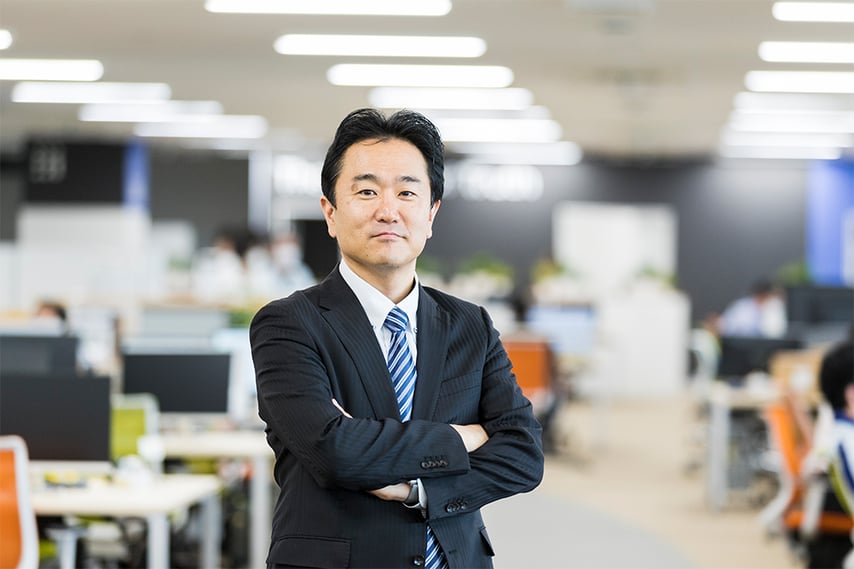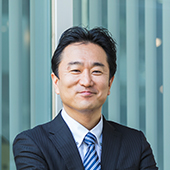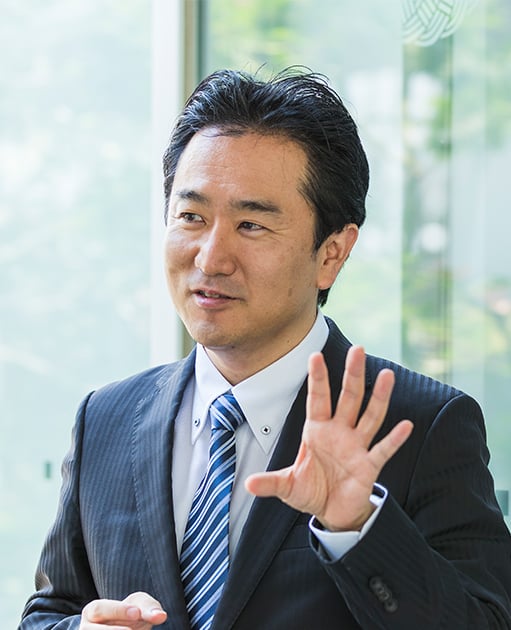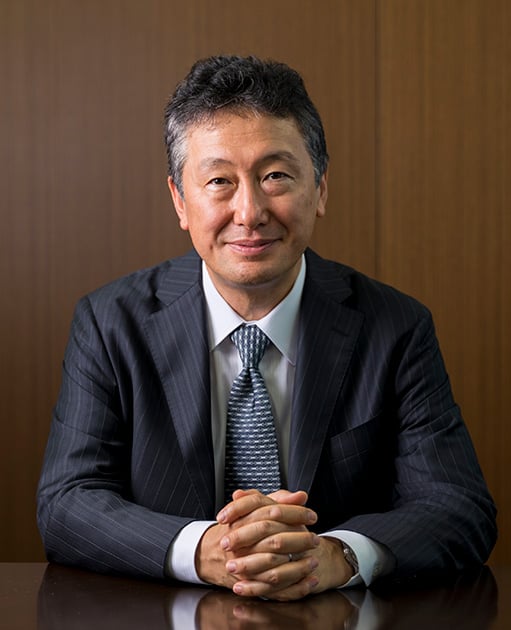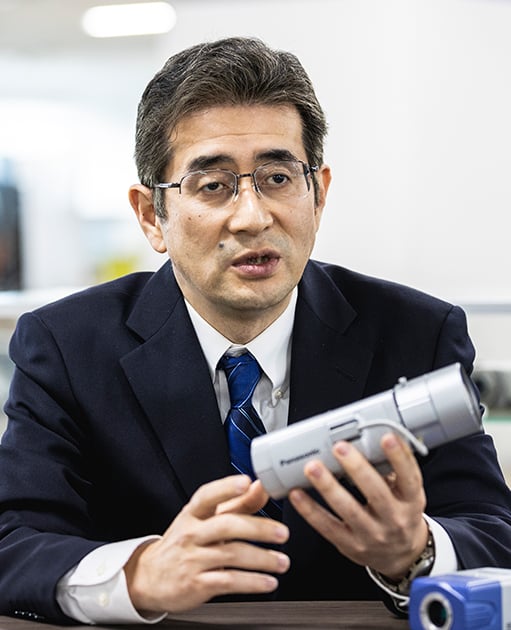Panasonic i-PRO Sensing Solutions Co., Ltd. has long been the top manufacturer of security camera systems in Japan. The team of Japan Intelligent Surveillance Division oversees the company's business operations in the Japan market. Jun Asahina, the head of this business division, played a major role in launching i-PRO's IP network camera business. We talked with him about the current situation and future prospects for i-PRO's security camera business in Japan.
Started with the rise of IP network cameras
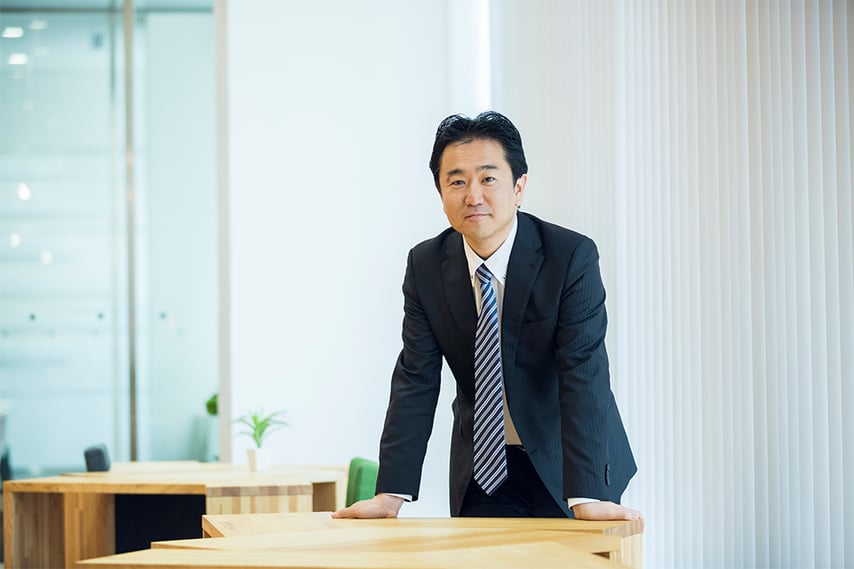
Q. Please tell us about your career to date in the security camera business.
I began my career in the security field in 2005, after securing a position in product planning at a Panasonic sales company in Japan. The Security Solutions Business Division was planning to develop a new IP camera, and at the time, 90% of security cameras were still analog. (An IP camera is a digital video camera that receives and sends data via an Internet Protocol network.) Sensing that the future lay in IP cameras, I asked my boss to let me give a presentation on his behalf to the company president. I wanted to propose the full-scale launch of an IP network camera business in Japan. I ended up heading a company-wide project to promote this proposal. That was the year when i-PRO got its start.
I was one of the flag bearers, but we couldn't sell the idea. It was a miserable period (laughs). Not only the competition of IP, but also the lineup, function, and usability of each company's analog camera system were really good. However, IP cameras offered overwhelmingly better image quality due to the fully digital technology. This meant that suspects captured by the camera could be clearly identified. Connect more freely. All we could do was hold onto the belief that the market would one day switch to IP technology.
Q. When did you feel that the IP network camera business was finally becoming a reality?
This was triggered by the business integration in 2010. At that time, the business divisions of the i-PRO Series and BB Camera Series were in separate companies within the group, and I was involved in a joint project between the two companies. By combining the strengths of both sides, we had found that we can achieve superior manufacturing at a much lower cost. In addition, the BB Camera division, which grew out of Kyushu Matsushita Electric, has strong cost power and manufacturing know-how accumulated in the telephone business.
I was convinced that Panasonic could launch a lineup of IP cameras with costs equal to or less than those of analog cameras, but with features that were just as good or better. Then, with a focus on image quality and usability, the i-PRO smart HD lineup was released in 2010. Thanks to the hard work of the distribution department and sales partners, we were able to far surpass our sales targets.
Three strengths of i-PRO
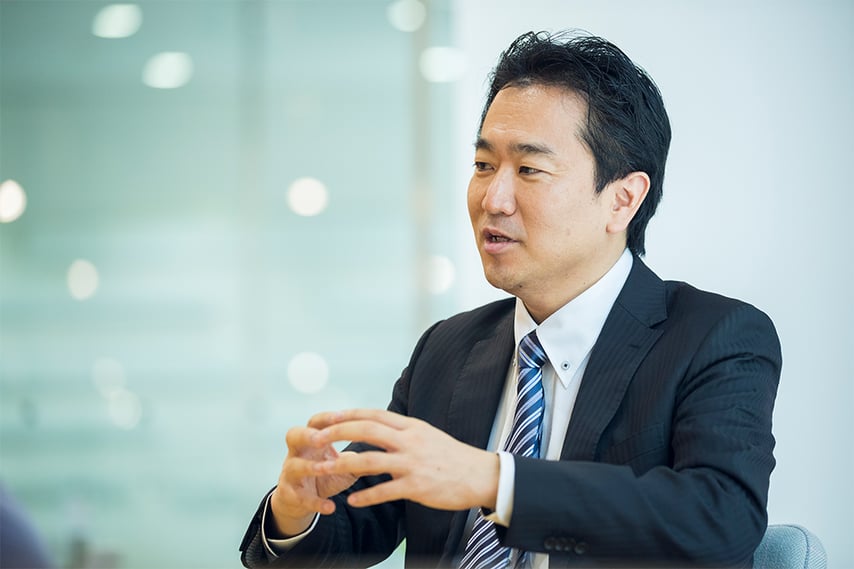
Q. What are the strengths of i-PRO in the Japanese market?
There are three core strengths. The first is excellent imaging technology, based on a history and an accumulation of expertise found at no other company. In 1957, Panasonic created the industry's first commercial surveillance camera. In 1997, we launched the world's first backlighting correction camera with wide dynamic range function for practical use. Our history of game-changing technological innovation has led to imaging technology that captures subjects clearly, even in challenging environments.
Security cameras must operate properly 24 hours a day, 365 days a year, under all kinds of conditions. To achieve this, a number of technical barriers have to be overcome. For example, raindrops on the camera surface can obscure security images, so a hydrophilic coating is applied to the lens causing droplets to dissipate, thereby resulting in clear image quality. To get a blur-free image, the shutter speed needs to be continually optimized by monitoring the movement of people and cars. In cold regions, ice can also form on the clear protective dome of the camera, so the ice has to be melted to maintain image quality. I think our primary core strength is the ability to continually realize these kinds of unique technological innovations.
Q. So constant technological innovation is the first core strength behind i-PRO's top market share in Japan. What are the other two strengths?
Our second strength is the usability of i-PRO equipment. We have developed our technology based on customer feedback over many years. For example, we ensure that the cameras are easy to install. There are also features that greatly simplify the complicated settings usually needed for connecting the video recorder and cameras. Feedback from sales partners and customers can sometimes be harsh, but we believe that this is one of the driving forces behind strong product development.
The third one is quality. Our products are used by professionals on the frontlines of business. In order to deliver reliable products that work continuously in all environments, 24 hours a day, 365 days a year, we apply a host of strict quality standards that exceed general requirements. Many of our customers have complete faith in the i-PRO and its long-term benefits.
Visual data utilization key to the future
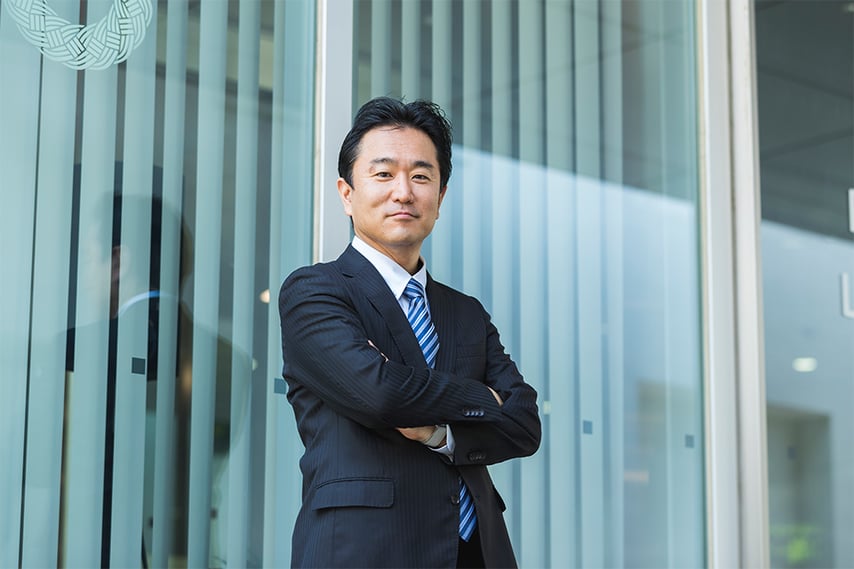
Q. How do you think the Japanese market will change in the future?
The role of security cameras has expanded to become data-gathering devices, and the market will continue to grow significantly.
The key to the future will be not just crime prevention, but also how a wide range of captured images can be utilized. All kinds of information can be extracted from video. For example, an in-store camera can be used for analyzing customer behavior patterns to improve retail space layout, as well as for gauging the effectiveness of promotions, and making management decisions accordingly. Cameras will also become useful tools for various kinds of automation needed to make up for labor shortages.
As such, the necessary camera functions will likely change in the future, and it will be important develop products that will be even more useful for obtaining data.
Q. What kind of challenges are there for better utilizing video?
Going forward, IP cameras will need to provide highly useful information. We will continue to hone our technologies to better realize the "The Power of Truth," which is also our brand tagline. Our aim is to take on the challenge of creating imaging technology that can capture information in even more difficult environments, that is exceptionally weather resistant, and that can obtain data that goes beyond 2D video. Various services for utilizing visual data are appearing on the scene. This means that AI processing will need to be carried out by each IP camera device, so that only the necessary data is uploaded to the cloud. We also want to remain a leader in AI cameras capable of this edge processing.
However, when it comes to utilizing video, the things that customers want to do and the data they want to analyze will differ depending on the application. Given this situation, we cannot provide solution packages only on our own.
Therefore, we are focusing on building relationships with various professionals such as AI and software developers. I want to expand our network of experts who can work together to create value, and I would like the network to be open and cooperative. By collaborating with partner companies like these, we expect mutually beneficial business expansion and steady resolution of customer issues.
A program has been launched for our AI camera application development partners called the i-PRO Camera Application Platform. By providing software development kits, partners can develop and sell their applications in an open environment. We promote this program through online activities, and it is another new challenge we are taking on.
Q. Finally, please tell us your aspirations for the future.
Thanks to our customers, we are the top manufacturer in the Japan market for security camera systems. However, looking at it from the perspective of crime prevention, our goal is still far from realized. Through technological innovation, we would like to prevent unfortunate incidents and accidents, while ensuring quick resolutions whenever they do occur. We will continue to take on the challenge of creating safe and secure spaces for society.
When I was a very young kid, my friends and I would head out to distant parks on our own, guided only by our adventurous spirit. Today, many people say that such outings are too dangerous for children without an adult to watch over them. Is this situation ideal? The world is not really that safe and secure, even in Japan. I think there is more we can do to help realize communities with greater livability.
